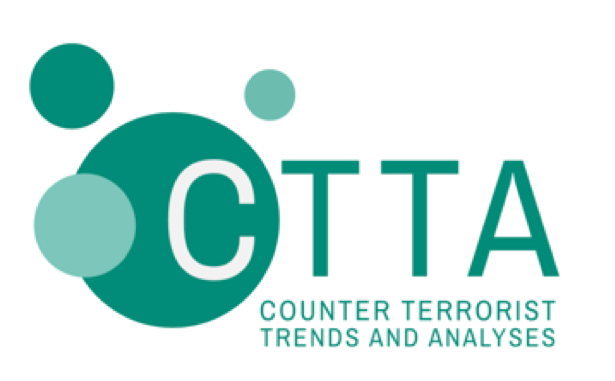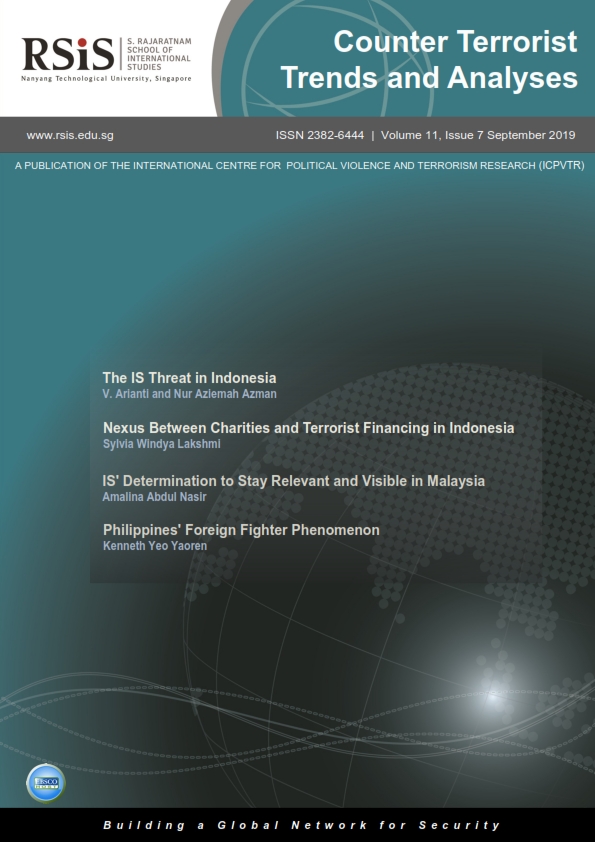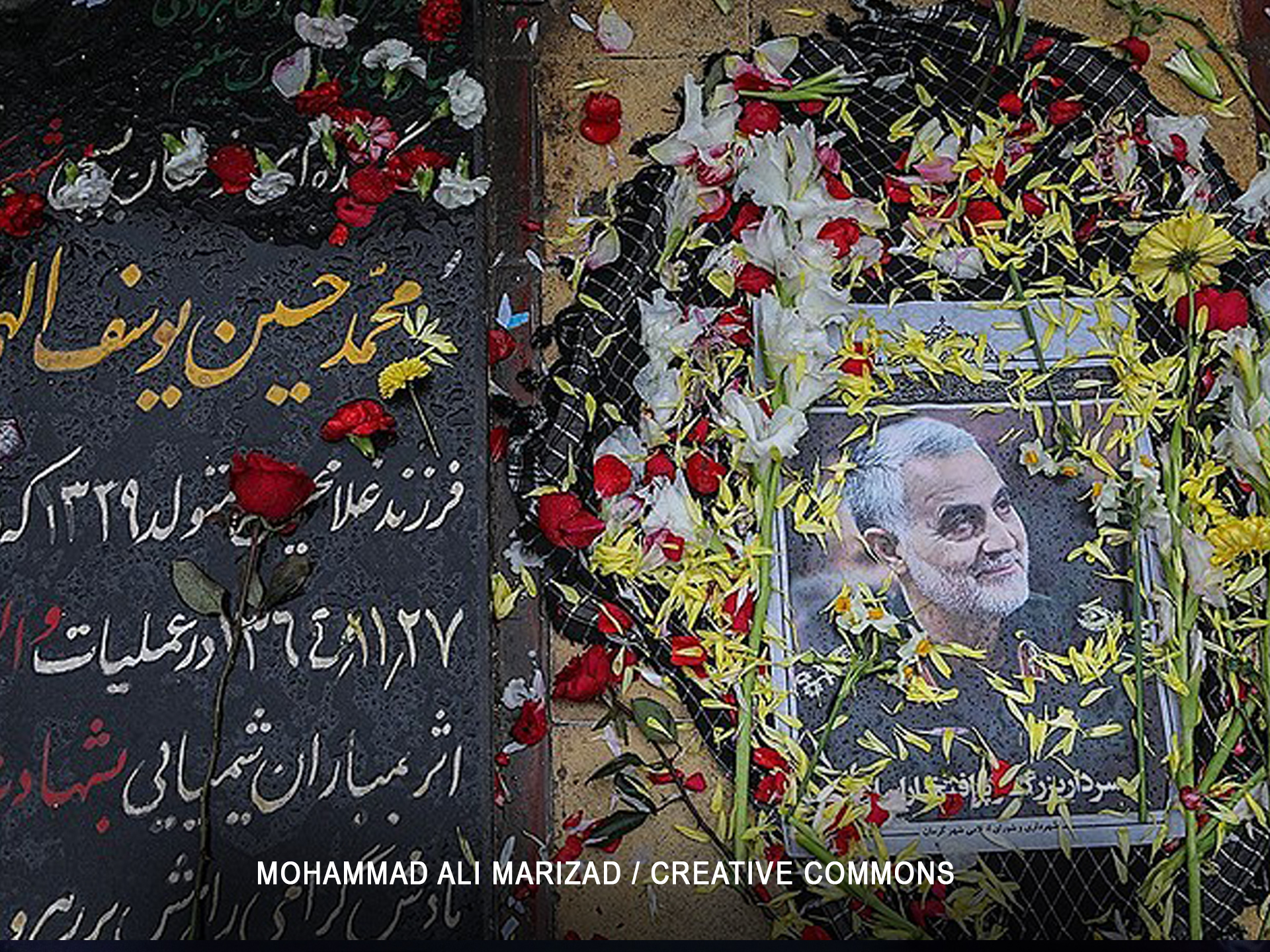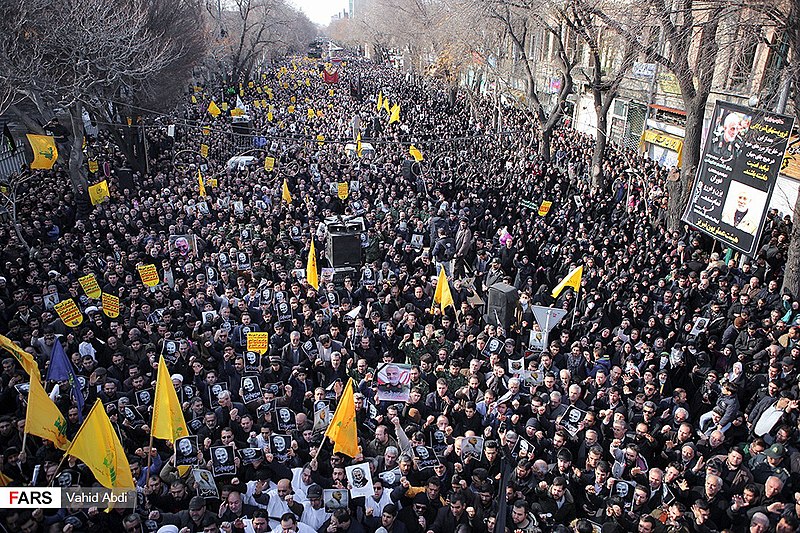

Noor Huda Ismail
Despite territorial losses and military defeat, the Islamic State (IS) terrorist group continues to pose a potent threat with its violent ideology and global network of affiliates. To mitigate the future threats coming from pro-IS militants in Southeast Asia, it is necessary to examine the background of these terrorists and their unique legacy compared to previous networks linked to the militant Islamist movement Darul Islam (DI) and the Al Qaeda-affiliated Jema ... more
Noor Huda Ismail
Despite territorial losses and military defeat, the Islamic State (IS) terrorist group continues to pose a potent threat with its violent ideology and global network of affiliates. To mitigate the future threats coming from pro-IS militants in Southeast Asia, it is necessary to examine the background of these terrorists and their unique legacy compared to previous networks linked to the militant Islamist movement Darul Islam (DI) and the Al Qaeda-affiliated Jemaah Islamiyah (JI).
Introduction
The loss of territory and other significant setbacks have not diminished the IS threat. A January 2020 United Nations report states that IS has begun reasserting itself in Syria and Iraq, mounting increasingly bold insurgent attacks.[1] Like many countries, Indonesia has suffered from IS-related terror attacks in which Indonesians in Syria were directly involved in directing or instigating strikes. However, many attacks in Indonesia have also involved individuals who were inspired by IS’ extremist propaganda. They would pledge their allegiance to IS online, and IS would opportunistically claim credit for their attacks.[2]
To mitigate against future threats, it is necessary to understand who these terrorists are and what their unique legacy is in the Indonesian context, compared to previous local jihadist networks, especially those linked to DI and JI.[3]
Current Militant Landscape
Presently, IS networks in Indonesia generally come under the umbrella of the Jamaah Ansharut Daulah (JAD),[4] an IS affiliated network led by top ideologue Aman Abdurrahman who is in police custody. There are other groups, however, such as Jamaah Anshorul Khilafah (JAK) led by a former JI operative, Abu Husna, who disagrees with the excessive interpretation of takfiri teachings (excommunicating Muslims from Islam and considering them liable to be killed) by Aman’s followers.[5]
Notwithstanding this difference, both JAD and JAK have sent recruits to Syria and Marawi, in the Southern Philippines to implement their core doctrines of iman (belief in God), hijrah (migration) and jihad (fighting against the enemies of Islam). For example, Anggara Supriyogi was a member of a pro-IS group called Al Hawariyun in Jakarta that has a strong affiliation to JAK. After unsuccessfully attempting to travel to Syria, Anggara then proceeded to Marawi with the help of a pro-IS Malaysian militant, Dr Mahmud Ahmed, with whom he communicated through Telegram.[6]
Following a series of arrests in recent years of pro-IS individuals involved in domestic terrorism, the anti-terrorism unit Detachment 88 observed that these pro-IS arrestees have “very shallow” knowledge of Islam. Most had not been through the pesantren (Islamic boarding schools) education system or undergone formal religious classes; their learning was restricted to IS propaganda and the teachings of Aman Abdurrahman. These translations (of Arabic publications) contain many misinterpretations of Islam but are eagerly accepted.[7]
Diversification of Gender Roles by New Pro-IS Indonesia Cells
The emergence of IS has also brought a fundamental change in how extremists view the role of women in their cause. The new pro-IS cells in Indonesia are now more open to active participation by women in their terror operations, two of whom took their own lives in the Sibolga case in March 2019 to avoid capture.[8] In the past, JI had restricted women to support roles as wives, mothers and teachers, even though they were expected to be as devout and committed as the men. They continue to be used as marriage partners to bind the men in prison to the group.[9]
Pro-IS women actively participate in IS religious gatherings. The IS networks in Surabaya, for example, had organised home-based religious gatherings for married couples.[10] One of the key teachings at such sessions was that “the wife must be obedient to the husband.’ This is not unusual in the patriarchal culture of Indonesian Muslims, but perhaps has acquired a new and exaggerated meaning within pro-IS circles.
Using female suicide bombers by self-radicalised cells like the Sibolga group was not only a tactical move to evade detection, but also a pragmatic one because such groups are so small that they have few people to carry out their ambitious goals.[11] One can also surmise that being “independent,” the Sibolga cell was also less constrained by the “usual norms” of women playing only a supportive role.
IS Targets and Tactics
The Indonesian police remains the prime target for pro-IS militants, for ideological and operational reasons. IS militants target police because they hunt and kill militants in defence of an allegedly tyrannical regime (the thagut). Police stations are attacked, especially by those seeking to steal weapons, because they are perceived to be softer targets than military installations.
Following an IS terror tutorial published in the second edition of IS’ magazine, Rumiyah, pro-IS cells in Indonesia also attacked and burnt the police station at Dramasraya, Padang in November 2017. The magazine’s section, “Just Terror Tactics” mirrored similar articles in AQ’s Inspire magazine that provided several ideas for knife stabbings, vehicle attacks or the use of explosives.
So far, the tactical prowess of pro-IS networks has been at polar ends: some have attacked police stations with swords and bows and arrows, while others have plotted to use home-made high explosives. This disparity between low-end and high-end tactics is due to the respective reasons: (a) the lack of trainers with actual military experience (because those who went to Syria to fight or were trained in Afghanistan or Mindanao in the 1980s and 1990s know they are under police surveillance); and (b) the ready availability of bomb-making manuals and the legacy of Bahrun Naim, the Indonesian mastermind of several terror plots in the region, who was killed in a US airstrike in Syria in June 2018. [12]
Bombing churches also feature prominently in the jihadist target list.[13] Ivan Ahmadi Hasiguan, the perpetrator of the 2016 St Joseph’s Church attack in Medan, said in an interview: “I wanted to emulate IS attacks here in Indonesia. I learned the technique from the Internet.”[14] A month before his attack, two IS operatives stabbed a priest to death in a church in France. While claiming responsibility for the attack, IS said its “soldiers” had attacked a church “in response to the call to target Crusader coalition states.” Hasiguan had learned to make his bomb from a manual created by Bahrun Naim.
Continuing radicalisation
Real world radicalisation continues to take place in prisons, home-based pengajian (religious classes) and during the month-long i’tikaf in mosques. A time of solitude and prayer while disconnected from day-to-day worldly affairs, i’tikaf is generally done during Ramadan in tandem with fasting inside a mosque. In Sumatra, jihadi recruiters use i’tikaf to spread their propaganda.[15]
In prisons, IS sympathisers disseminate the ideology among inmates as well as recruit visitors to distribute the propaganda outside prisons.[16] After completing their prison terms, the pro-IS prisoners return home to do full-time recruitment and mobilisation. Home-based pengajian are also increasingly taking over the role once played by pesantrens. Consisting of groups of 10-15 people, they are considered a safer way to form cells and mobilise since most pesantren are monitored closely by the authorities; invitations are issued via restricted chat groups on Telegram.[17]
Jihadi sub-culture in Cyberspace
Since most of these groups are connected largely in cyberspace, the possibility of other members going into hibernation to avoid capture while looking for opportunities to attack cannot be dismissed.[18] The pro-IS network is akin to a subculture but it is increasingly connected largely in cyberspace. Unlike JI members who tend to be more territorial due to the group’s original mantiqi organisational structure, pro-IS networks do not appear to be constrained by geography. They experience an “imagined solidarity” with other Islamist fighters in Indonesia and elsewhere, a solidarity that is grounded in the mainstream Islamic concept of “ukhuwah Islamiyah” or Islamic brotherhood, and subscribed to by all jihadists including JI.
Pro-IS activists have, however, distorted the concept of Islamic brotherhood to create a subculture where jihadists in Indonesia, who were unable to travel to Marawi in 2017 to fight with their ‘brothers’, conducted retaliation on the latter’s behalf. In their statements to the police, some jihadists have rationalised attacks on Indonesian police officers as retaliation against the Indonesian government for sending troops to Marawi to fight against their Philippines brethren.
Conclusion
With the largest Muslim population in the world (over 230 million), Indonesia has been grappling with Islamists seeking to establish an Islamic state in one form or another via violent and non-violent means since the 1940s. To meet this challenge in the near term, it is necessary to intensify deradicalisation efforts to stem the recruitment of vulnerable youths, women and children. To lure potential recruits, pro-IS networks have grounded their beliefs in religious narratives, giving questionable new meanings and interpretations of selected Islamic texts and traditions that support their violent agenda. Counter measures must, therefore, include more effective dissemination of counter-ideological arguments via social media and religious classes. Disenchanted former pro-IS members could also be enlisted to challenge the radical narratives of Islamist groups which have misled their recruits with false promises and distorted interpretations of sacred texts.
In the medium and longer term, however, much more needs to be done. Political, religious and community leaders, thinkers and strategists need to ask some hard questions about the future of the Muslim community in Indonesia in a modern, globally connected and technologically advanced world. Back in the 1940s during the struggle for independence, it was perhaps understandable for various political forces representing the Islamists, nationalists, army and communists, to contend and struggle to achieve their vision of what an independent state of Indonesia should be after 130 years of Dutch rule.
Seventy years after independence, a firm political consensus on how society should be organised and governed and the direction ahead should be well established. The DI struggle was neutralised in the 1960s but its splinters and off-shoots have remained active, with the radical wings morphing into the JI since the 1990s and pro-IS networks since 2014. A clear road map is necessary to work towards achieving a community of excellence with national narratives that promote inter-religious harmony, educational advancement, and economic well-being.
Noor Huda Ismail is a Visiting Fellow at the S. Rajaratnam School of International Studies (RSIS), Nanyang Technological University (NTU), Singapore, and the founder of the Institute of International Peace Building in Indonesia. He can be reached at [email protected].
References
[1] “Eighth report of the Secretary-General on the threat posed by ISIL (Da’esh) to international peace and security and the range of United Nations efforts in support of Member States in countering the threat,” United Nations Security Council, January 20, 2020, https://www.un.org/sc/ctc/wp-content/uploads/2019/02/N1901937_EN.pdf.
[2] Sidney Jones, “How ISIS has Changed Terrorism In Indonesia,” The New York Times, May 22, 2018, https://www.nytimes.com/2018/05/22/opinion/isis-terrorism-indonesia-women.html.
[3] Darul Islam was a radical movement that emerged during the country’s independence struggle in the 1940s, that called for the establishment of an Islamic state in Indonesia. Jemaah Islamiyah, a militant Islamist group currently active in the country, has its roots in this movement.
[4] Wahyudi Soeriaatmadja, “Indonesian Cleric Aman Abdurrahman Sentenced to Death for Inciting Terror Attacks,” The Straits Times, June 22, 2018, https://www.straitstimes.com/asia/se-asia/indonesian-cleric-aman-abdurrahman-sentenced-to-death-for-inciting-terror-attacks.
[5] Nava Nuraniyah, “Jakarta Rally Exposes Division Among Islamic State Loyalists”, The Lowy Institute, November 14, 2016, https://www.lowyinstitute.org/the-interpreter/jakarta-rally-exposes-division-among-islamic-state-loyalists.
[6] Richard C. Paddock, “He Aimed To Fight in Syria. ISIS Had a Broader Plan: Southeast Asia,” The New York Times, September 3, 2017, https://www.nytimes.com/2017/09/03/world/asia/isis-fighters-philippines-indonesia.html.
[7] Author’s interview with Detachment 88 in Jakarta on February 12, 2020.
[8] Telly Nathalia, “Wife of Terror Suspect Blows Herself Up and Her Children in Sibolga,” Jakarta Globe, March 14, 2019, https://jakartaglobe.id/context/wife-of-terror-suspect-blows-herself-up-and-her-children-in-sibolga/.
[9] Noor Huda Ismail, “The Role of Kindship in Indonesia’s Jemaah Islamiya,” The Jamestown Foundation, June 2, 2006, https://jamestown.org/program/the-role-of-kinship-in-indonesias-jemaah-islamiya/.
[10] Anna Kelsey-Sugg, “The Role Women Played in Indonesia’s First Whole-Family Suicide Bombings, And What to Do Next,” ABC Radio National, May 30, 2018, https://www.abc.net.au/news/2018-05-30/women-terrorists-in-indonesia/9811152.
[11] Ulta Levenia and Alban Sciascia, “Wife, Mother and Suicide Bomber,” The Jakarta Post, March 22, 2019, https://www.thejakartapost.com/academia/2019/03/22/wife-mother-and-suicide-bomber.html.
[12] Edo Karensa, “Who Is Jakarta Attack Mastermind Bahrun Naim?” Jakarta Globe, January 18, 2016, https://jakartaglobe.id/news/jakarta-attack-mastermind-bahrun-naim/.
[13] Apriadi Gunawan, “Medan Church Attack Suspect’s IS Links Investigated,” The Jakarta Post, September 8, 2016, https://www.thejakartapost.com/news/2016/09/08/medan-church-attack-suspects-is-links-investigated.html.
[14] Author’s interview in Jakarta on November 24, 2019.
[15] “Learning from Extremists In West Sumatra,” IPAC Report No. 62, 28 February 2020.
[16] Francis Chan, “Indonesian Jails Are Breeding Ground for Terrorists: Study,” The Straits Times, December 15, 2016, https://www.straitstimes.com/asia/se-asia/indonesian-jails-are-breeding-ground-for-terrorists-study.
[17] “‘We do not welcome calls for violence’: Telegram commits to removing IS, terror-related content,” Jakarta Post, November 15, 2019.
[18] Nava Nuraniyah, “The Evolution of Online Violent Extremism in Indonesia and The Philippines,” RUSI-IPAC Paper No.5, July 11, 2019, https://rusi.org/sites/default/files/20190711_grntt_paper_5.pdf.









